January 12, 2022

Honing your homebrewing skills will only result in a better beer. While it seems like the fermentation process is mostly out of our control, we have a lot more control than we believe! After over two decades of providing equipment to the best in the beer industry, we have developed a deep understanding of brewing and advanced brewing techniques These tips will elevate your resulting brew and make homebrewing a whole lot easier.
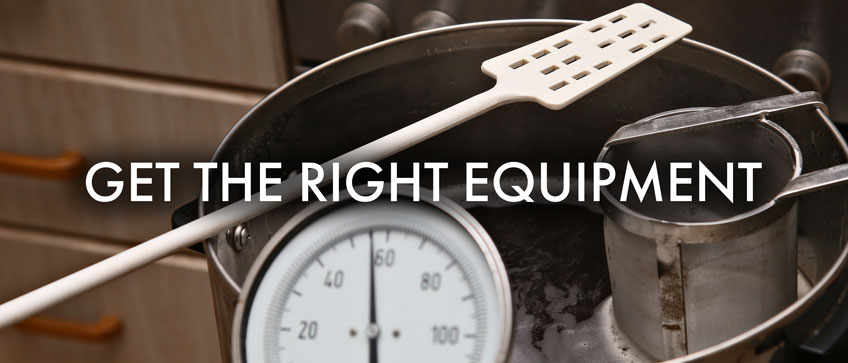
Get the right equipment.
Your equipment is essential for successful and easy homebrewing. Fermentation equipment varies widely; however, you should always choose equipment that is sturdy, easy to use, and easy to clean. When it comes to carboys and homebrewing buckets>, there are a variety of options to suit your needs and budget. We have a full guide on selecting carboys and buckets here. While everyone may have different needs, the bestseller among brewers has to be the Kegco Wide Mouth Carboys. For those looking for something more professional grade, you may want to consider conical fermenters, stainless steel fermentation tanks, or casks & barrels. Along with a high-quality fermentation vessel, good siphoning equipment will reduce your mess and ensure proper transfer of your wort. This will help limit unwanted particulates in your beer, ensuring a crystal clear finish. To precisely monitor the temperature of your wort during fermentation, you may want to consider a thermostat, heat pad, or even a cooling bag. You may even want to consider a kegerator that has a wide temperature range that allows you to ferment your beer inside the cabinet. All these pieces of equipment matter when it comes to enhancing and perfecting your fermentation process.
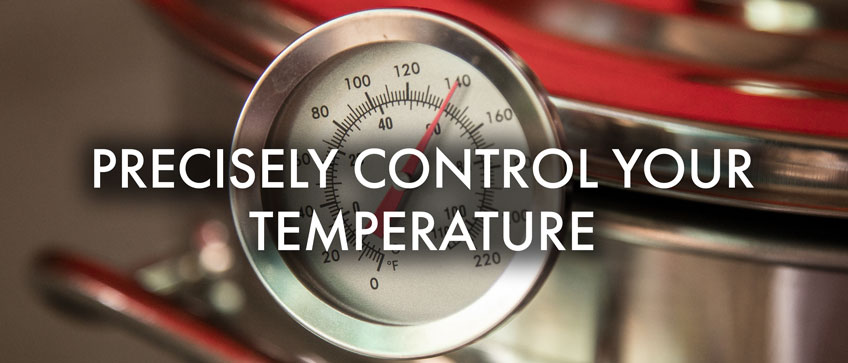
Precisely control your temperature.
Fermentation is quite a complex chemical process that involves living organisms, which makes it also such a delicate process! You will need a different fermentation temperature depending on the strain of yeast you are using. Generally, between 60 and 78 degrees Fahrenheit for all yeasts, and lager yeasts ferment best at temperatures of between 48 and 58 degrees Fahrenheit. Additionally, cold fermentation often occurs at 32 degrees Fahrenheit for lagering. In order to complete this stage, you will need a dedicated refrigerated space for your brew. Our recommendation is to find a kegerator that allows you to ferment as well as serve! The Kegco Homebrew Kegerators have a wide temperature range from 32 to 75 degrees Fahrenheit, which allows you to ferment all your brews The large cabinet design allows you to store up to a full-sized keg, allowing you to brew large batches of beer. The design is very intuitive and effortless to use for any homebrewer.
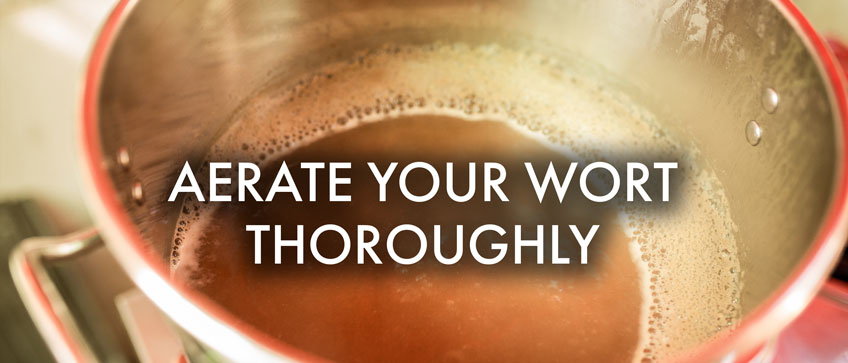
Aerate your wort thoroughly.
In order for your yeast to successfully ferment, it needs oxygen. Aside from aerating the batch immediately before pitching, you can also aerate your yeast starter several hours before pitching to help prepare the yeast. Simply, pour out most of the liquid and aerate that which remains. An easy means to aerate your wort is to use an oxygenating kit you can achieve the ideal levels of O2 gas can be achieved in as little as 5 minutes.
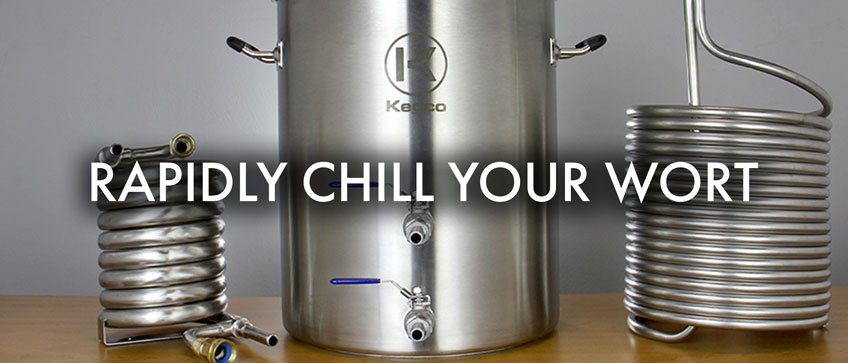
Rapidly chill your wort.
Rapidly chilling your wort prevents the growth of contaminants and bacterias that cause spoilage. Since this essential step leads into the next crucial step, fermentation, you will want to invest in a good wort chiller. Trust us, it is well worth purchasing a good wort chiller if you are serious about homebrewing and perfecting your brews. We have a detailed article on why you should use one, here. Worth chillers come in many different forms to learn more about which one is right for your brewing style, you can read our detailed article on the differences, here.
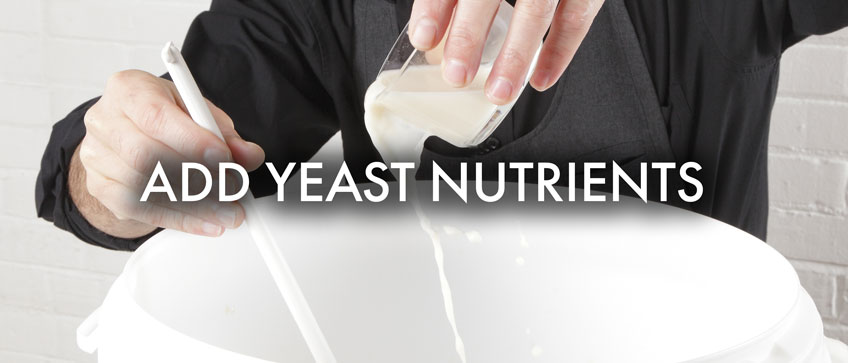
Add yeast nutrients.
Feeding your yeast the necessary micronutrients is important for their survival so, they may do their important job of fermenting. Most strong beers will contain the macronutrients needed to keep the yeast alive but adding a small boost to micronutrients will promote healthy fermentation. Just half of the dose of yeast nutrients recommended by the manufacturer should do.

Rouse the yeast.
Near the end of a difficult fermentation, you may need to rouse the yeast to finish the fermentation. If your fermentation is just shy of your target final gravity (FG) but seems to have stopped, you can stir the beer with a sanitized racking cane to reawaken the yeast to finish the fermentation process. Rouse the yeast only once, if it does not do anything, rousing it a second time will not affect the fermentation.

Avoid oxygen exposure.
If you choose to age your beer for an extended amount of time, oxygen can come in contact with the beer and will promote staling. Do not rack your beer unless it is necessary, go straight from primary to the keg or bottling bucket. If you do use a racking can, rack without splashing when you do transfer the beer. Minimize the number of times you take samples for a hydrometer reading. When bottling or kegging, work quickly to minimize the contact time with air. Also, if kegging, purge the headspace with CO2 after the keg is filled. We recommend a wide-mouth carboy and these hombrewing kegs, which allow you to easily and quickly transfer your beers.
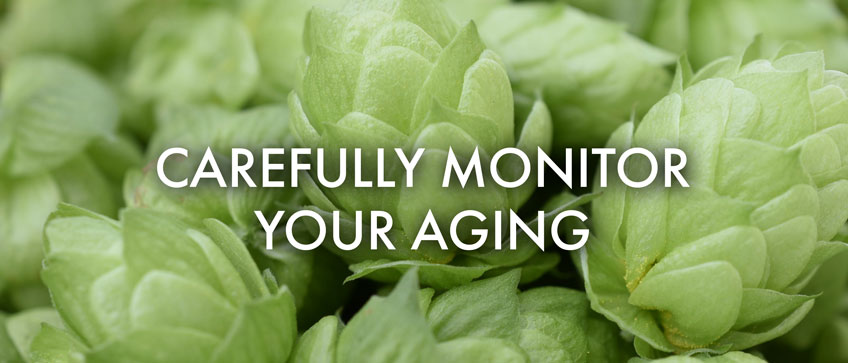
Carefully monitor your aging.
Beers vary when it comes to aging time, some big beers will age well over a prolonged period of time but many will not. If you have pitched an adequate amount of yeast and ran a good fermentation, your beer may mature much more quickly than you expect. Accounting for these factors is very important because you do not want to continue to age your beer or have it spoil on you. Even the biggest ales should be ready in a couple of months if the fermentation process has been completed properly.
Big lagers may take just a bit longer. Ideally, store beers you intend to age for long periods of time around 50 degrees Fahrenheit, away from light or excessive vibration. We highly recommend storing your aging beers in a Homebrew Kegerator. The precise temperature control, low vibration, and quiet operation make this an ideal storage solution for any homebrewer. Also, when you're done fermenting and aging in the kegerator, you can use it to dispense your beers!

Homebrew Hotline
From fermentation to kegging, our team of experts is available to answer your homebrew questions and help you choose the right equipment for you. With our decades of experience, we can help you get started with homebrewing, troubleshoot, and supply you with everything you need to brew the perfect beer! Contact us at 800-710-9939.


 Single Faucet Kegerator Beer Dispensers
Single Faucet Kegerator Beer Dispensers Dual Faucet Two Tap Kegerators
Dual Faucet Two Tap Kegerators Triple Faucet Three Tap Kegerators
Triple Faucet Three Tap Kegerators Undercounter Built-In Kegerators
Undercounter Built-In Kegerators Outdoor Kegerator Beer Dispensers
Outdoor Kegerator Beer Dispensers Commercial Kegerators
Commercial Kegerators Mini Kegerators
Mini Kegerators Cold Brew & Nitro Coffee Dispenser Kegerators
Cold Brew & Nitro Coffee Dispenser Kegerators Carbonated Water Kegerators
Carbonated Water Kegerators Home Brew Kegerators
Home Brew Kegerators 15" Kegerators
15" Kegerators Kombucha Equipment
Kombucha Equipment Guinness® Dispensing Kegerators
Guinness® Dispensing Kegerators Vending Kegerators
Vending Kegerators Wine Kegerators
Wine Kegerators Kegerator Cabinets
Kegerator Cabinets Kegerator Covers and Accessories
Kegerator Covers and Accessories Kegerators
Kegerators Kegerator Conversion Kits
Kegerator Conversion Kits Kegs & Keg Accessories
Kegs & Keg Accessories Beer Faucets
Beer Faucets Beer Shanks
Beer Shanks Draft Beer Towers
Draft Beer Towers Keg Taps Couplers
Keg Taps Couplers Regulators & Gas Equipment
Regulators & Gas Equipment Beer & Gas Line Hose
Beer & Gas Line Hose Co2 and Nitrogen Air Tanks
Co2 and Nitrogen Air Tanks Beer Line Cleaning Equipment
Beer Line Cleaning Equipment Drip Trays
Drip Trays System Fittings
System Fittings Jockey Boxes
Jockey Boxes Keg Beer Party Pumps
Keg Beer Party Pumps Glassware & Accessories
Glassware & Accessories Guinness® Dispensing Equipment
Guinness® Dispensing Equipment Remote Glycol Systems
Remote Glycol Systems Wine Cooler Refrigerators
Wine Cooler Refrigerators Wine Cellar Cabinets
Wine Cellar Cabinets Wine Racks
Wine Racks Cooling Units
Cooling Units Wine Dispensing Systems
Wine Dispensing Systems Wine Glasses
Wine Glasses Wine Accessories
Wine Accessories Howard Miller Wine & Spirits Furniture
Howard Miller Wine & Spirits Furniture Wine Making
Wine Making Nitro Hot Draft System
Nitro Hot Draft System Ready to Drink Bag-in-a-Box Coffee Dispensing Equipment
Ready to Drink Bag-in-a-Box Coffee Dispensing Equipment Nitrogen Infusers
Nitrogen Infusers Nitrogen Tanks & Generators
Nitrogen Tanks & Generators Nitrogen Beer Regulators
Nitrogen Beer Regulators Nitro Cold Brew Coffee Kegs
Nitro Cold Brew Coffee Kegs Cold Brewed Coffee Tools
Cold Brewed Coffee Tools Espresso Machines
Espresso Machines Cleaning Equipment
Cleaning Equipment Outdoor Appliances
Outdoor Appliances ADA Appliances
ADA Appliances Panel Ready Appliances
Panel Ready Appliances Commercial Grade Appliances
Commercial Grade Appliances Beverage Centers
Beverage Centers Refrigerators
Refrigerators Drawer Refrigerators
Drawer Refrigerators Ice Makers
Ice Makers Water Dispensers & Accessories
Water Dispensers & Accessories Freezers
Freezers Home Brew Equipment Kits
Home Brew Equipment Kits Fermentation Equipment
Fermentation Equipment Boiling and Mashing Equipment
Boiling and Mashing Equipment Home Brew Beer Kegs
Home Brew Beer Kegs Home Brew Kegerator Conversion Kits
Home Brew Kegerator Conversion Kits Brewing Tools
Brewing Tools Home Brew Ingredients
Home Brew Ingredients Cleaning Chemicals
Cleaning Chemicals Test Equipment
Test Equipment Home Brew Beer Bottles and Bottling Equipment
Home Brew Beer Bottles and Bottling Equipment Brewery Fittings
Brewery Fittings Draft Beer Equipment
Draft Beer Equipment Homebrewing Equipment
Homebrewing Equipment Wine Equipment
Wine Equipment Luxury Appliances and Refrigeration
Luxury Appliances and Refrigeration Coffee Equipment
Coffee Equipment Home Bar & Barware
Home Bar & Barware Kombucha
Kombucha The Beverage Blog
The Beverage Blog Frequently Asked Beer Questions
Frequently Asked Beer Questions Shop by Brand
Shop by Brand Shop by Category
Shop by Category



